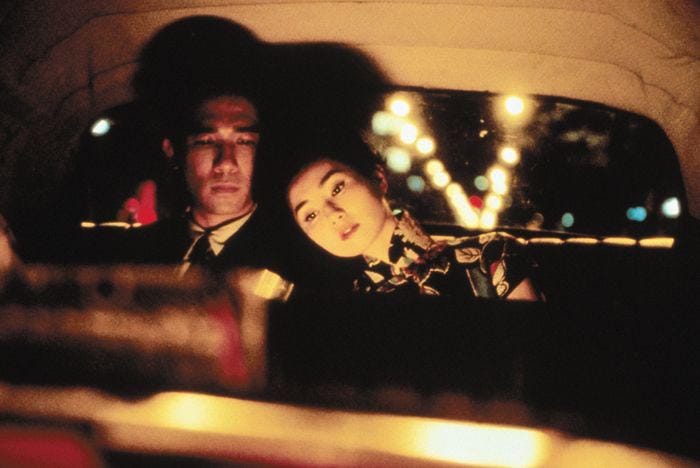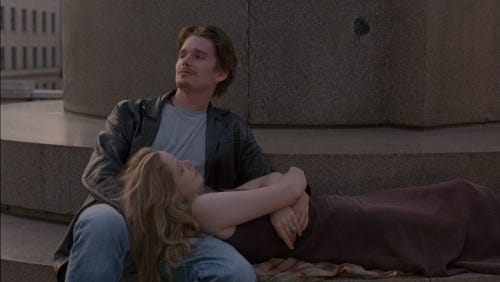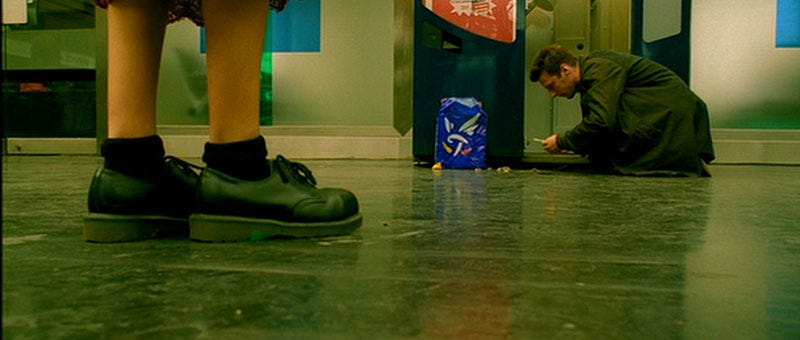Being and (doing) nothingness
An ode to the quietest hours, and why doing nothing might actually mean everything
There’s a certain kind of intimacy that sneaks up on you when you’re doing absolutely nothing with someone.
It’s not found in the thrilling first date where you’re both performing shinier, more impressive versions of yourselves, or experienced on the third when you’re dipping your toe in the waters of future vulnerability—I’m talking about a Wednesday evening so divinely quiet it feels borrowed, one that unspools so slowly you could wrap yourself up in it.
It’s the space where time starts to feel irrelevant and where you realise—almost against your will—that you like this person enough to just be.
HEY, ARE YOU FREE TO DO NOTHING TOGETHER NEXT WEDNESDAY?
Philosopher Jean-Paul Sartre may have written 638 pages about consciousness, freedom, and existence in his seminal book Being and Nothingness, but my take on the overarching concept of “nothing” is simpler (and perhaps tinged with a bit more horniness): Nothingness, when done right, is an art form, and it might be the best litmus test for a relationship and, maybe more telling, depending on who you ask, how you’ll fare after your first coital encounter.
If you can pull this off—lounging around in companionable silence and dressing gowns or sharing a club sandwich in bed while debating the moral dilemmas of Rivals with someone—you’re probably onto something.
To me, “doing nothing” is more mortally revealing than any carefully orchestrated dinner date because it requires neither effort nor pretension. This makes it terrifying, too, because there’s nowhere to hide—just you, them and the quietness between.
Still, if early-stage romance is about curated versions of ourselves—“Look at me! I collect vintage vinyl records and read Proust for fun! I’m just like, soooo unbearably cool, chill and effortlessly gorgeous, right?”—then “doing nothing” is what finally strips away that curation. And when that happens, you’re left with two people and a Wednesday evening, seeing what exists in the gaps.
THE BEARABLE HEAVINESS OF COEXISTING
I used to think love had to look like a montage scene like the one in Before Sunrise, wandering through Vienna at night, talking about life and love under the glow of street lamps, or Call Me By Your Name, cycling through sun-drenched Italian countryside, stopping only to share a peach and a kiss. For a long while, I thought that if nothing was happening, then, well, nothing was happening.
Over time, however, I’ve come to realise that it’s the quiet hours that often carry the most weight. Writer Milan Kundera referred to this muted calm as the “unbearable lightness of being,” drawing on Nietzsche’s idea of life gaining weight through its repetition. But when it comes to love, to me that weight feels, well, less unbearable—it’s the bearable heaviness of coexisting.
Sometimes, silence and stillness ground you more than movement ever could. When he sighs loudly every time he shifts position on the sofa or when she taps her thumb absentmindedly against her mug, these small, barely perceptible quirks start to stand in for the person themselves. They’re the little things you’d miss most if they were gone.
Ultimately, doing nothing isn’t about romance or chemistry in the obvious sense—it’s about presence. It’s about showing up for someone, even when there’s nothing to do.
NOTHING IS WHAT PEOPLE WANT
In an episode of Mad Men, Don Draper tells Peggy Olsen, “You’re good at what you do, but you haven’t thought it through. Nothing is what people want.” Don’s talking about advertising, but he might as well be talking about modern relationships. We want distractions. Noise. Busyness and plans. Anything to fill the silence, because it’s easier to fill that quiet void with pre-planned clangour than to sit in it. Silence creates a vacuum for total exposition—or the creeping realisation that there’s nothing to expose. Silence can be awkward. Daunting, even—because what if you sit there long enough and someone actually says, gasp, something real?
The people you can do nothing with—no furtive glances at your phones, no nervous small talk, no need for lavishness or constant diversion—are the ones who let you rest in yourself. Not as an escape, but as a way of feeling more there.
Recently, I was lying in my bed next to someone I really quite adore, listening to fat raindrops pelt the windows. It was 4AM. We were both awake and I went to make him tea. When I climbed back under the duvet, we didn’t speak and that was okay, because I just needed to lie there. And I did, with him next to me, until the light outside turned orange and the rain stopped.
Nothing was happening, and yet everything was.
CANCEL YOUR VYVANSE SCRIP—WE’RE PAYING ATTENTION TO NOTHING NOW
In her essay On Attention and Grace, Simone Weil (philosopher, writer, big fan of suffering) once wrote: “Attention is the rarest and purest form of generosity.” Doing nothing with someone is about attention—not performing but noticing.
In the gorgeous elegy she wrote for her long-time partner, Molly Malone Cook, poet Mary Oliver put Simone’s definition even more simply: “Attention without feeling…is only a report.” Doing nothing is all feeling. The attention you pay, it’s not just observing—it’s seeing.
Seeing the way they leave coffee grounds in the sink, the quiet rhythm of their chest rising and falling as they fall asleep next to you. The way their cheeks crinkle when they smile at something small, or how they instinctively offer their looped elbow on a walk. It’s noticing the smallness and loving it because it’s theirs.
When you strip away the dates and big, fancy dinners (which are, at least to me, also lovely and very fun—don’t get it twisted), what you’re left with is a person in their truest, least edited state. Love or romance isn’t always in the grand gestures or long, tortured confessions—it’s in the comfortable silences, the unspoken agreements, too.
“Nothing” isn’t nothing at all. It’s the most human state you can share with someone.
IT’S NOTHING BUT IT’S ALSO…EVERYTHING?
Maybe it’s because modern dating insists on constant motion—questions, plans, new experiences—that nothingness feels quietly radical. To sit in it, together, is downright defiant. It’s two people saying: “We’re fine here, as we are. We don’t need to prove, perform, or fill this space with anything other than ourselves.”
And maybe that’s the real test. Because if someone makes doing nothing feel like something, then that’s not nothing—it’s everything.









This is beautiful!!